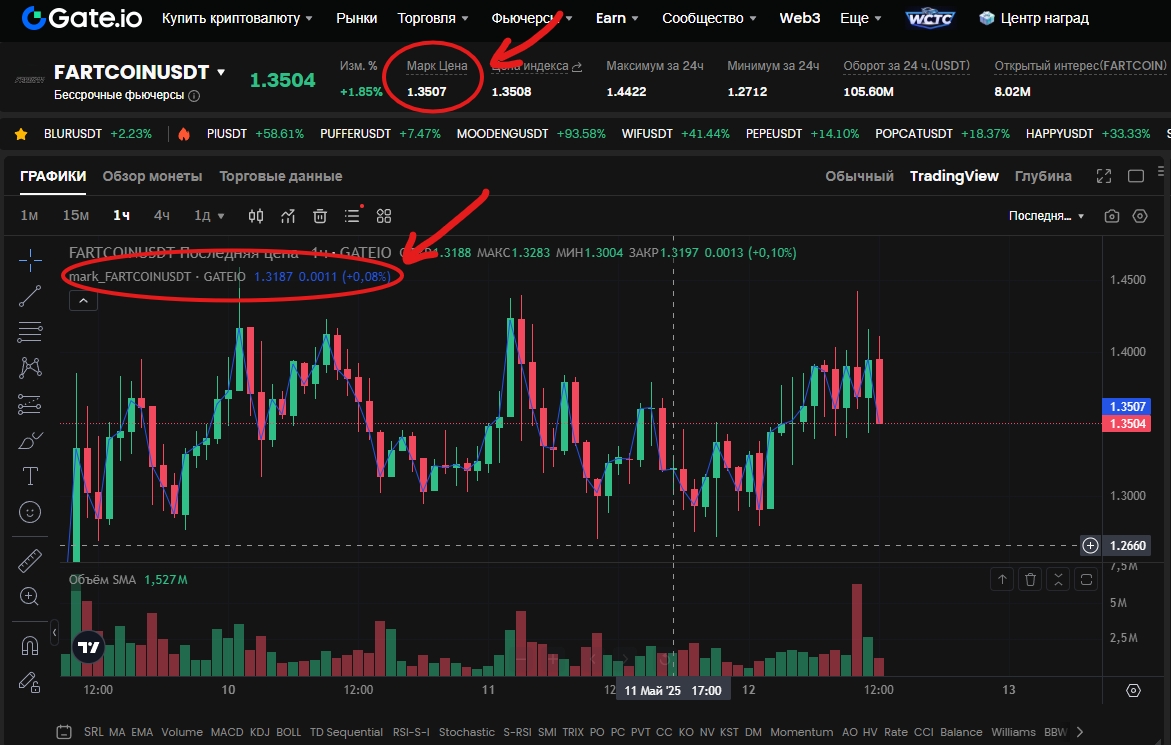〽️What is the mark price?
A position is liquidated when the exchange automatically closes a trader's trading position. This usually happens when a trader uses borrowed funds (leverage) but loses enough money in a position to fall below the minimum margin requirements.
It is important to understand that it is the exchange that carries out the process of liquidating positions; the Metascalp trading terminal and the Metabroker broker are not involved in this process.
The exchange carries out the process of liquidating a position based on the mark price, not the current market price. During periods of high volatility, as well as when there is a discrepancy (decorrelation) between the price of the underlying asset and derivatives (e.g. futures), the mark price may differ significantly from the current market price (by tens of percent).
What is the mark price?
The mark price is the average price of a financial instrument. Exchanges develop special algorithms to calculate the mark price, which may vary depending on the type of instrument and the risk management strategy adopted on a particular platform. The mark price on different exchanges will differ for the same ticker.
The mark price is usually displayed on the instrument page as an indicator on the chart, as well as a separate value in the ticker information:

Margin type.
It is also important to consider the type of margin used to open a position: cross or isolated.
When trading with isolated margin, each position has its own separate pool of funds used as collateral. If a position starts to decline in price and the level of borrowed funds (margin) falls to 100%, the platform will automatically close the position to prevent further losses.
In cross margin mode, all your positions use the total funds in your account as collateral. This means that profits from one position can cover losses from another. The security level of these positions, i.e. how well they are protected from losses, is the same for the entire account. When you trade, profits or losses on open positions immediately affect your overall account balance. If losses become too large and the margin level falls to 100% or below, the exchange may automatically close (liquidate) some or all of your positions. This is done to prevent further losses that would exceed the available funds in the account.
Example
1. Initial conditions:
- Let's assume that the trader has 1,000 USDT in his account.
- The trader opens a long position on BTC/USDT using borrowed funds (10x leverage), buying 0.1 BTC at a price of 50,000 USDT per BTC.
- Position value = 0.1 BTC 50,000 USDT/BTC = 5,000 USDT.
- Trader's own funds = 500 USDT (used as margin, since 5000 USDT / 10 = 500 USDT).
2. Liquidation process:
If the mark price reaches 45,000 USDT, the total loss will be:
- Current position value: 0.1 BTC 45,000 USDT/BTC = 4,500 USDT.
- Loss: 5,000 USDT (initial position value) - 4,500 USDT (current value) = 500 USDT.
- Since the loss of 500 USDT is equal to the margin invested, the position will be liquidated.
This example uses the isolated margin type. In cross margin mode, the position will be liquidated when the loss reaches 1,000 USDT (liquidation of the entire account).
Last updated